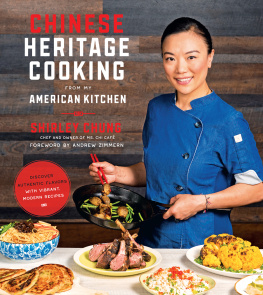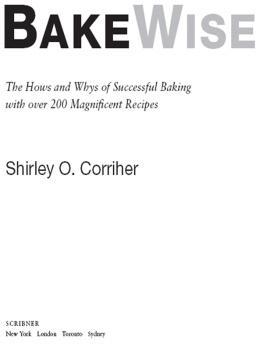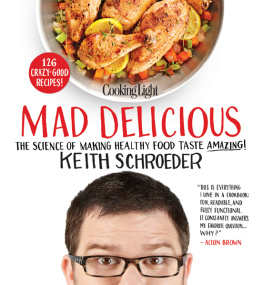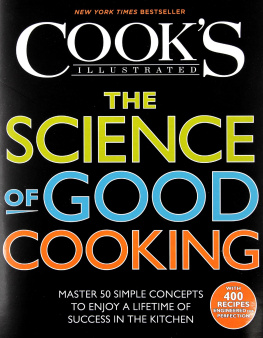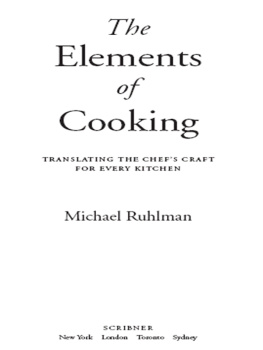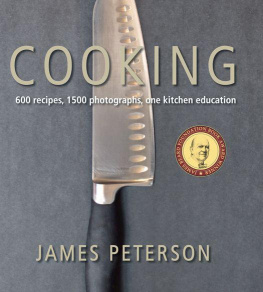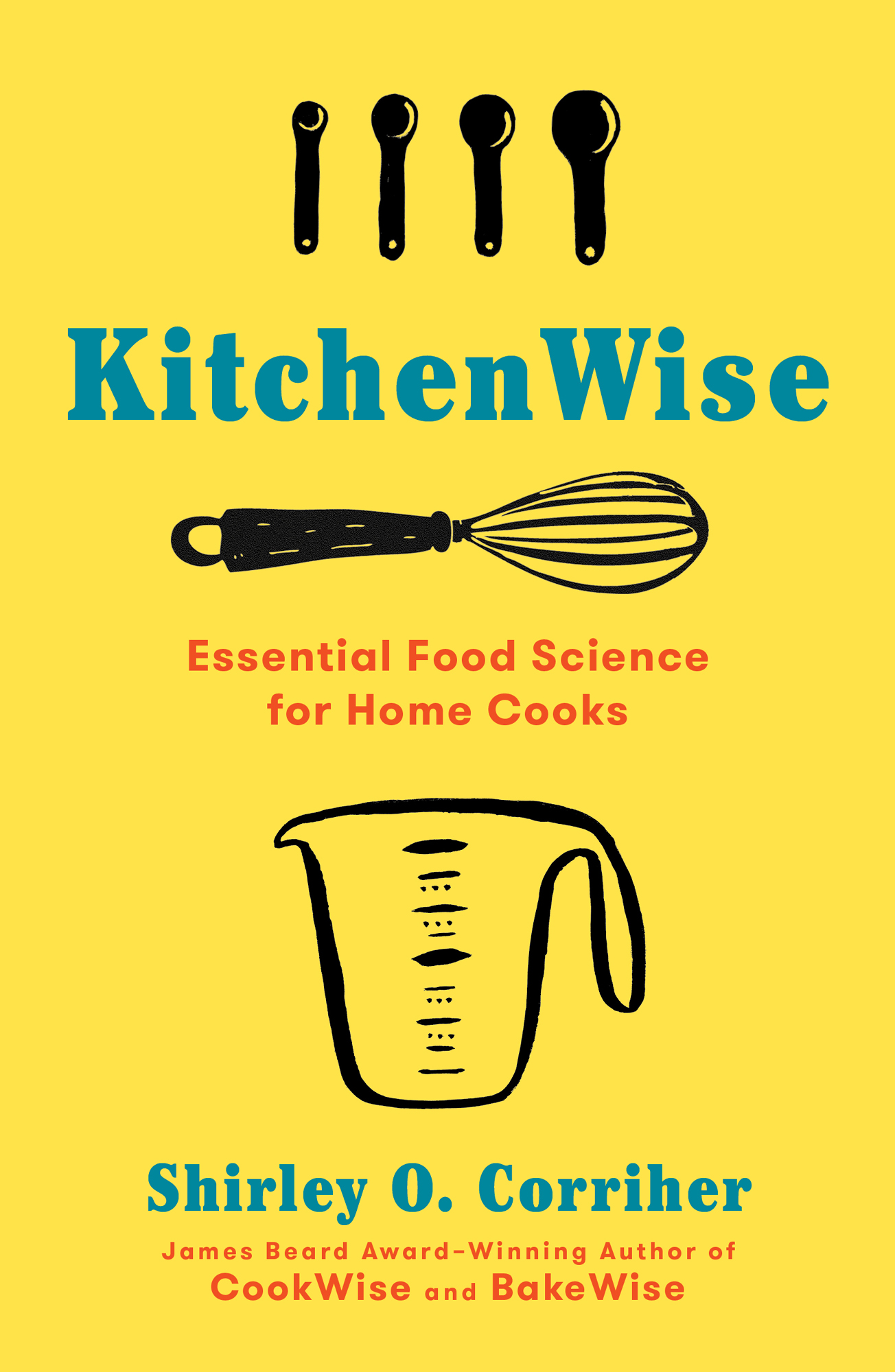Thank you for downloading this Simon & Schuster ebook.
Get a FREE ebook when you join our mailing list. Plus, get updates on new releases, deals, recommended reads, and more from Simon & Schuster. Click below to sign up and see terms and conditions.
CLICK HERE TO SIGN UP
Already a subscriber? Provide your email again so we can register this ebook and send you more of what you like to read. You will continue to receive exclusive offers in your inbox.
To everyone who has wondered why
INTRODUCTION
I was a research biochemist for the Vanderbilt University School of Medicine before my former husband and I opened a boys school together, and there I began my culinary adventures. We started with two boys but had over thirty within a year, and I did all the cooking for the students and staff, three meals a day, seven days a week. We grew to 148 (including teachers). For eleven years, I got heavy-duty, hands-on cooking experience. I planned the meals, bought the groceries, and cooked. Kitchen staff was hard to find because the school was so isolated on the bluffs of the Chattahoochee River, so I was mostly on my own.
Desperate for help, I pored over cookbooks. To my dismay, many recipes from good cookbooks did not work, or produced miserable food! I did not want to waste expensive ingredients and my time on miserable food. I knew how to do research from my chemistry days, so I went to the science literature, found an expert, picked up the phone, and made a call. If I had a problem with fruits and vegetables, I called Dr. Robert Shewfelt, professor of food science and technology at the University of Georgia. For a starch problem, I called Dr. Carl Hoseney, professor of grain science at Kansas State University. These experts were generous with their time and knowledge, and were an enormous help to my education. Over the years I studied with culinary experts from all over, including those from La Varenne and Le Cordon Bleu in Paris, and Leiths School of Food and Wine in London.
Eventually, I developed a reputation for being able to solve cooking problems. Teachers; chefs; food producers like Pillsbury, Procter & Gamble, etc.; and my hero, Julia Child, consulted with me about their issues in the kitchen. I loved Julia. She would call the next day and tell me exactly what she did and how it came out. With big companies, I wouldnt know whether what I suggested had worked until one of their people would rush up to me at a conference and say, You saved us on that chocolate cake!
I have taught all over the United States and from Vancouver to Melbourne to Erice, in Sicily. I love to share my findings, so I have written three books: CookWise (which won a James Beard award in 1998), BakeWise (which won a James Beard award in 2008), and now KitchenWise, a handy guide to food science with a few of my favorite recipes so that you can create magnificent food.
A little science can free you to be much more creative in the kitchen. For example, 1 egg will almost set 1 cup of liquid. For a quiche or custard with 2 cups of cream or milk, for a firm set, you will need 3 eggs, or 2 eggs plus 2 yolks. Now that you know the limiting factor, you are free to go wild with the rest of the recipeadd all the veggies, cheese, or bacon you like!
KitchenWises goals are to enable you to spot bad recipes and know how to fix them, to know some science of taste and flavor so you can make a good dish taste great, and to allow you to consistently prepare wonderful, delicious, beautiful food. Bon apptit!
CHAPTER ONE FLAVOR
WHAT MAKES FOOD TASTE GREAT
For centuries, cooks have strived to make the most flavorful dishes. By learning more about taste and flavor, we can make good food taste great.
What Is the Difference Between Taste and Flavor?
We tend to use the words taste and flavor interchangeably, but scientifically speaking, theyre not the same. The physical taste receptors on our tongues and in our mouths correspond to only five primary tastes: sweet, sour, salty, bitter, and the savory sensation called umami. Taste buds contain clusters of fifty to one hundred receptor cells that represent all five tastes. While some areas are more sensitive to certain tastes, we actually have receptors for all five tastes on all areas of the tongue.
Technically, taste refers only to these five physical taste receptors, while flavor includes all the thingstaste, temperature, texture, aroma, colorthat help us recognize a food as being herby, nutty, spicy, fruity, and so on. Aroma is key to identifying these flavors, as our sense of smell is much more refined than our sense of taste.
Flavor includes everything that contributes to our thinking a food is delicious.
The Role of Taste Receptors
Taste receptors can help sustain life. To our bodies, sweet indicates energy-producing sugars, bitter is a warning of possible toxins (deadly alkaloids are bitter), salty points to minerals that our bodies cannot survive without, and umami indicates life-giving protein.
Chemical Makeup of the Five Physical Taste Receptors
- Sweet indicates energy-giving carbohydrates.
- Salt indicates life-sustaining minerals and subdues bitterness, allowing other flavors to emerge.
- Umami (salts of glutamic acidprotein savory taste, sometimes perceived as ripeness or sweetness) indicates life-giving proteins.
- Bitterness is a warning of potential toxicityall natural toxins are bitter.
- Sour may indicate the onset of spoilageproceed with caution.
What Sends Taste Buds Zinging?
Dr. Harold McGee, author of On Food and Cooking, points out that big food compounds like carbohydrates, proteins, and fats do not affect our taste buds much, but their smaller component partssugars from carbohydrates, amino acids from proteins, and fatty acids from fatsare extremely flavorful. This is exactly what some of our basic tastes indicate. For example, sugars set off our sweet taste buds, and certain amino acids and small pieces of protein set off our umami taste buds.
How do we make these small flavorful compounds that send our taste buds zinging? Cooks use everything from heat (actual cooking) to the interaction of ingredients to techniques like layering (adding ingredients at different stages of cooking) to creating umami by selecting the right ingredients (choosing ripe products or fermented products for an intensely flavorful result) to strategically storing food (aging and standing, allowing the breakdown of food [carbohydrates to sugars, protein to amino acids, and fats to fatty acids] for more flavor) to get great flavors.
HEAT FOR FLAVOR
We humans and our ancestors owe much to cooking with heatwe actually owe the size of our brains to cooking. Harvards Dr. Richard Wrangham and his colleagues studied how important cooking was in human evolution. Cooking made plant foods softer and easier to chew and substantially increased their available energy, particularly in the case of starchy tubers. This enabled Homo erectus to evolve with larger brains. Bigger brains required more food. The modern human brain requires a whopping 20 to 25 percent of our energy (food) intake!
When we apply heat to food, the flavor changes as structures break down. These physical changes make more nutrients available to our bodies, and also make more flavors available. Many vegetables, like onions, carrots, sweet peppers, and fennel, seem to become sweeter when cooked. There are several factors at work behind this phenomenon, including evaporation and chemical changes that remove some acidic or unpleasant-tasting compounds.




